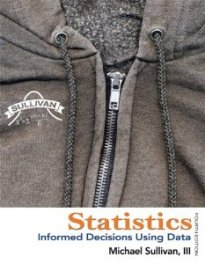A Survey of Mathematics with Applications 9th Edition by Allen R. Angel, Christine D. Abbott and Dennis C. Runde exhibits students how we use arithmetic in our daily lives and why that is important. The book additional emphasizes this with the addition of latest “Why This Is Important” sections throughout the text.
Chapter Openers and Part Openers introduce every chapter and part with interesting and motivational applications, illustrating the real-world nature of the chapter topics. Downside Fixing begins in Chapter 1 the place college students are introduced to downside fixing and important thinking. The issue-fixing theme is then continued all through the text, and particular drawback-fixing exercises are offered within the train sets.
Vital Pondering Skills are featured in sections on inductive reasoning and the vital skills of estimation and dimensional analysis. Profiles in Mathematics offer the stories of people that have advanced the discipline of mathematics briefly historic sketches and vignettes. Mathematics In the present day relates mathematics to everyday life, serving to college students to recognize the need for math and gain an appreciation for math of their lives.
Did You Know? features highlights the connections between mathematics and a wide range of different disciplines, including history, the humanities and sciences, and expertise in colorful and fascinating boxed features. Timely Suggestions, added to assist students, help with idea comprehension or relate the material to other sections of the book. Expertise Tips seem as notes which were added in chosen sections to elucidate how a graphing calculator and/or Microsoft Excel could also be used to work sure problems.
Exercise Units include various and numerous exercise types akin to Idea/Writing, Apply the Expertise, Drawback Fixing, Problem Downside/Group Activity, Recreational Mathematics, and Internet/Analysis Activities. Chapter Summaries, Overview Exercises, and Chapter Exams comprise end-of-chapter sections that assist students review material and prepare for tests. Group Tasks seem on the end of each chapter and are suggested projects that can be used to have college students work together. These projects can be assigned to particular person students if desired.
Real-life and up-to-date examples encourage the matters all through, and a wide range of workout routines help students to develop their downside-solving and significant thinking skills. Authors offer the material in a manner that is clear and accessible to non-math majors. The text includes all kinds of math topics, with contents which are flexible to be used in any one- or two-semester Liberal Arts Math course.
More details about this book...
or
Download A Survey of Mathematics with Applications PDF Ebook :





























 Subscribe to email feed
Subscribe to email feed





